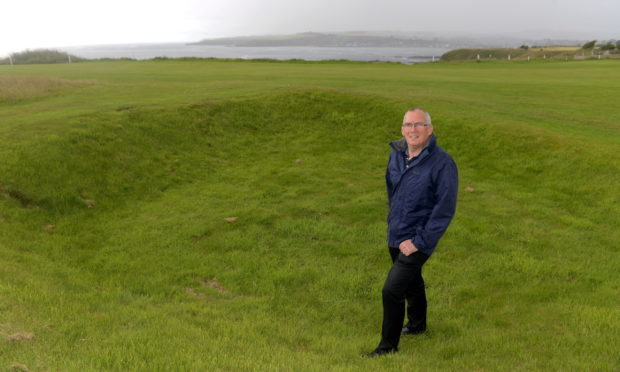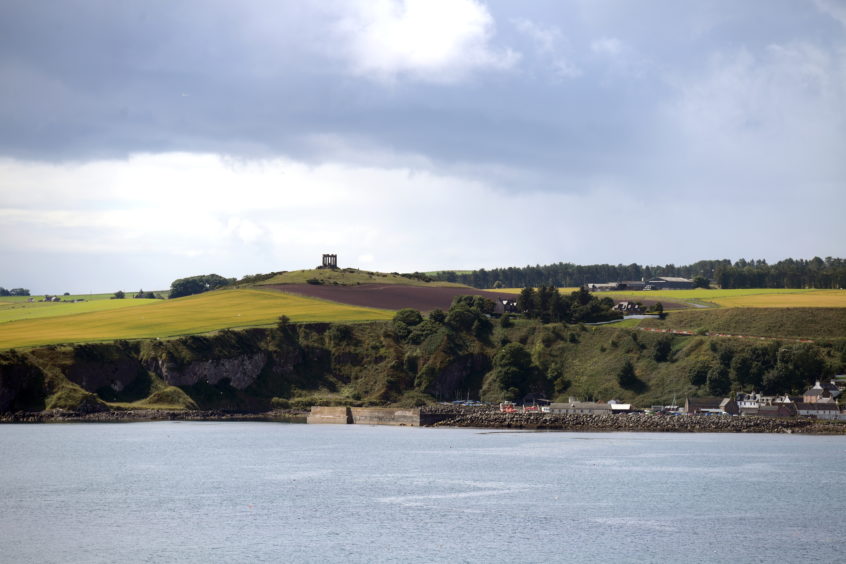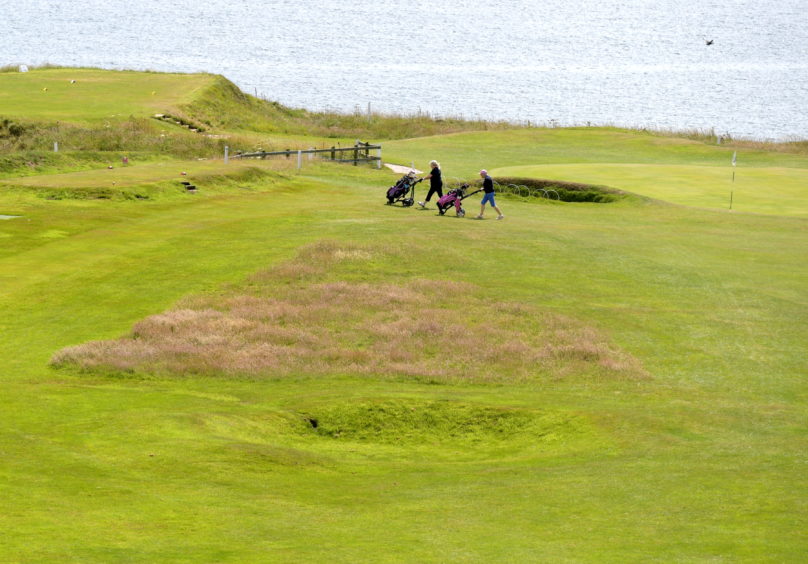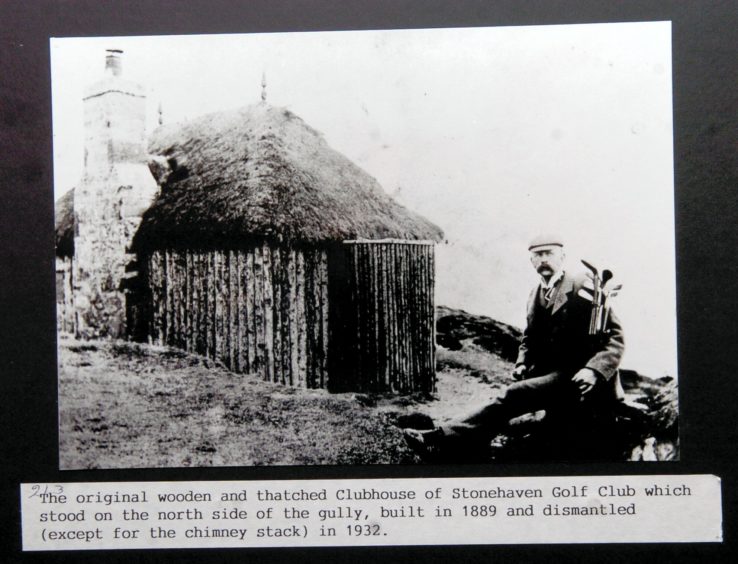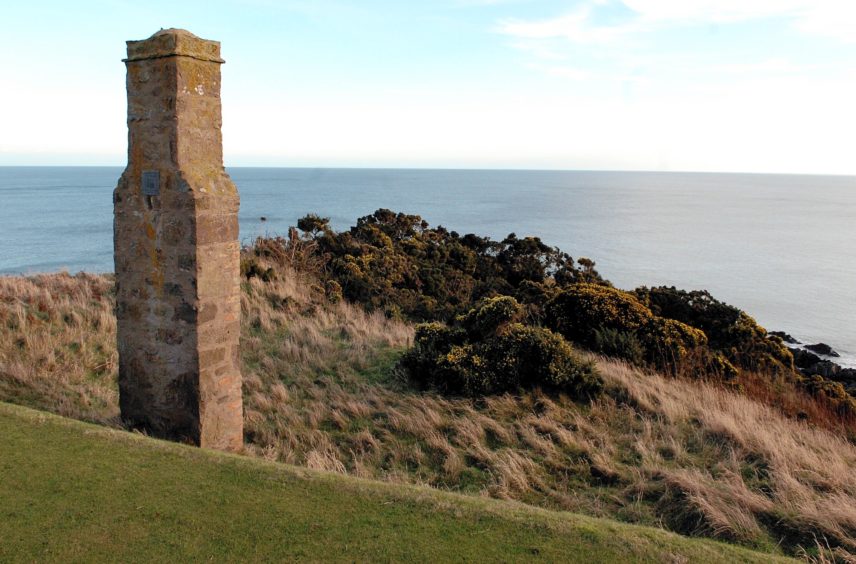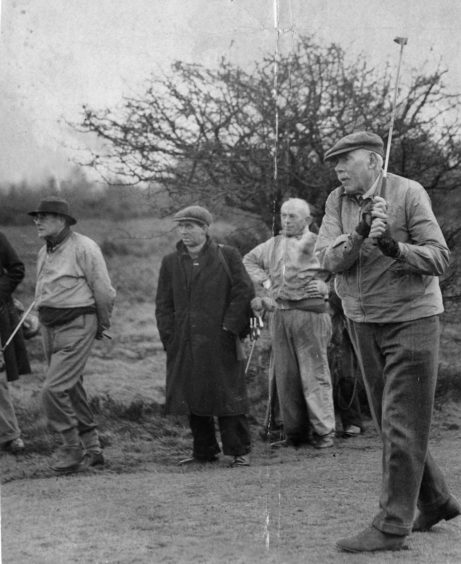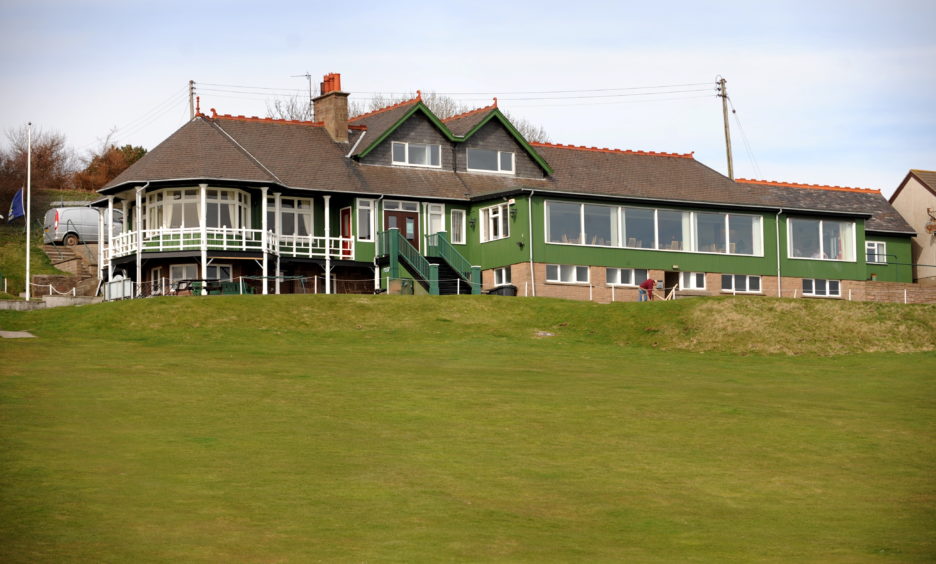Some golf courses are shaped by nature, others by the hand of man – but the north-east can boast one with a unique feature provided by the Luftwaffe.
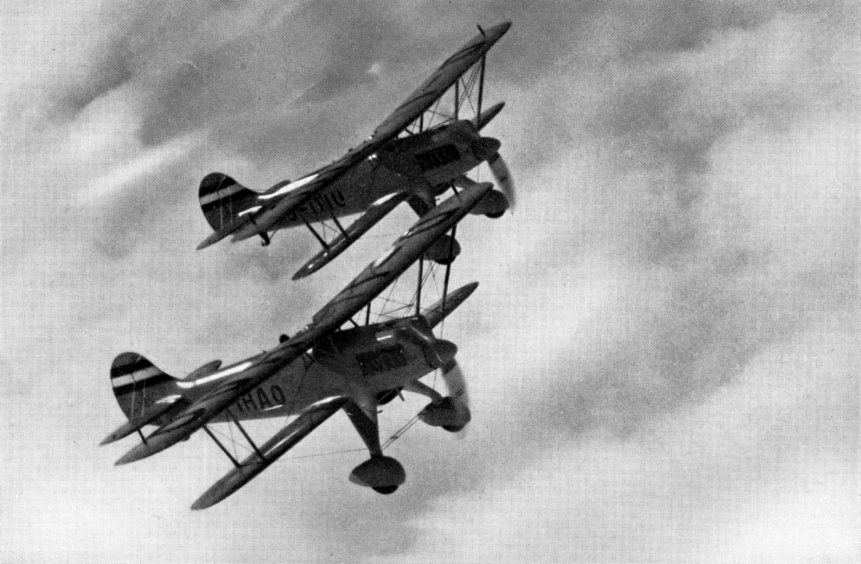
“Hitler’s Bunker”, lying between the first and second fairways of Stonehaven Golf Course, is the legacy of a Nazi raid that happened 80 years ago on August 2, the remnants of a huge crater ploughed into the ground by high explosive bombs.
Today, it is part of the folklore of the club – and the north-east – and a quirky point of interest for players and visitors alike as they enjoy the stunning views across the golf course, out to Stonehaven Bay and across to the town itself, on a sunny summer day.
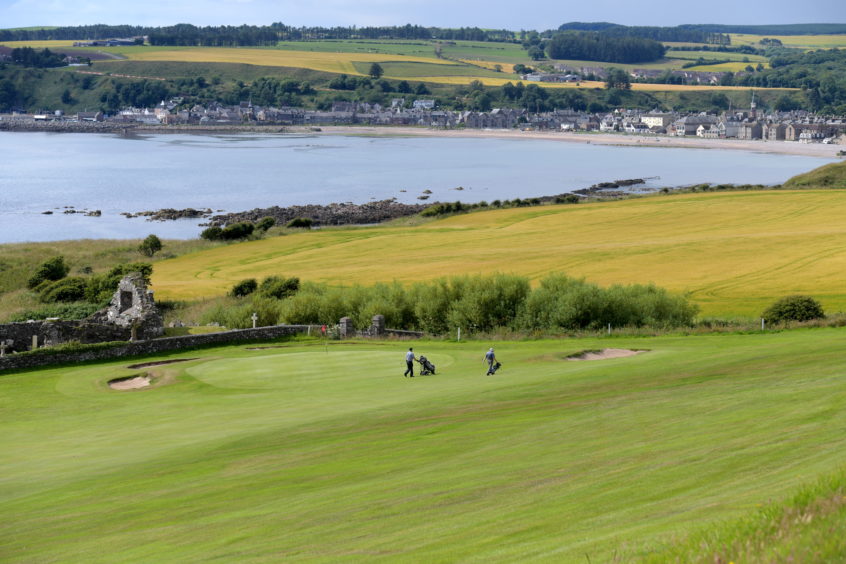
But on Friday August 2 1940 it was far from a tranquil scene. The dead of night was shattered by the drone of a German bomber lumbering over the coastline, then the crump and blast as bombs fell to the ground, exploding in a blaze that lit up the skyline.
A total of 49 bombs rained down in the early hours – nine of them high explosives, the rest incendiary devices designed to burn and destroy anything they hit.
Fortunately, they hit little of consequence, as news reports of the time told, none of them naming the golf course or the town where it happened under strict wartime censorship rules.
“They fell harmlessly on a golf course and other open ground,” said the Press & Journal.
“Not even a window pane was broken, although one bomb made a huge crater in the golf course, less than 200 yards away from the nearest building.”
But for all the lack of damage, the fear on the night for local people was tangible. One eyewitness, the golf club caretaker, had a lucky escape, after being thrown off his feet, but not injured.
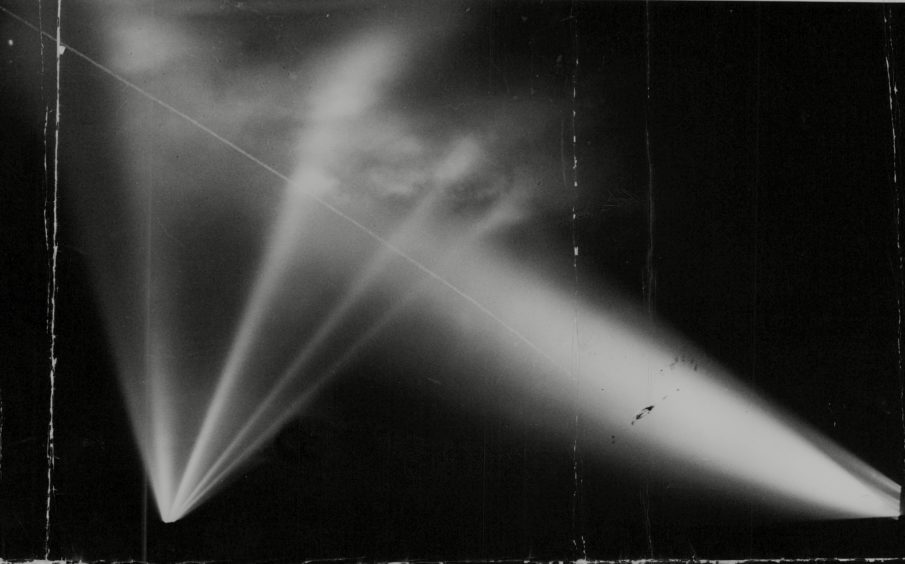
He told the P&J: “I heard the raider. Searchlights were sweeping the sky. All at once I saw their beams converge as if they had located the plane. Immediately afterwards I heard the scream of bombs and ran for shelter.
“Before I could reach it, however, there was a violent explosion and I was flung on my back. It seems miraculous that none of the windows in the building were broken.”
Another witness told the P&J that even though he was quite distant from the scene of the explosions, he was still thrown to the ground.
“The air seemed to be thick with incendiary bombs and for a considerable time the air was full of the smell from them.”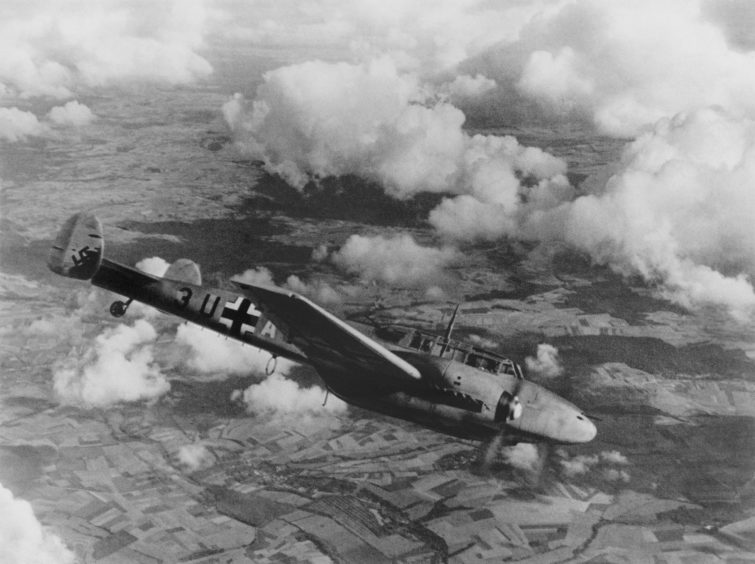
A report in the Mearns Leader said the high explosive and incendiary devices were dropped in a straight line for about 600 yards. About 100 yards opposite the clubhouse were two craters, one about 10 feet deep and thirty feet wide.
The paper reported that in the nearby “burgh” people told of their doors and windows being rattled by the blast.
One ARP warden watched the raid from a vantage point and said it was like a fireworks display. “I was thankful it was obvious the fireworks could do little damage,” he said.
The bomber itself was believed to have been shot down, a short distance out to sea from Stonehaven. Another eyewitness told of hearing machine gun fire, then the sound of explosions, as if the bomber had jettisoned its payload. A few minutes later, he saw flames coming from the surface of the water.
Newspaper reports told that in the days after the blast, local people scoured the crater for fragments of the bomb as souvenirs.
In the 80 years since the high drama of that night, the crater became a legendary part of the golf course. It is very much a talking point today, said Stonehaven Golf Club manager Stewart Kerr.
“It is just an extra little quirk for the course that obviously made a bit of history,” he said.
“The club itself goes back 132 years, but that’s a newer arrival left by the Luftwaffe during the Second World War.
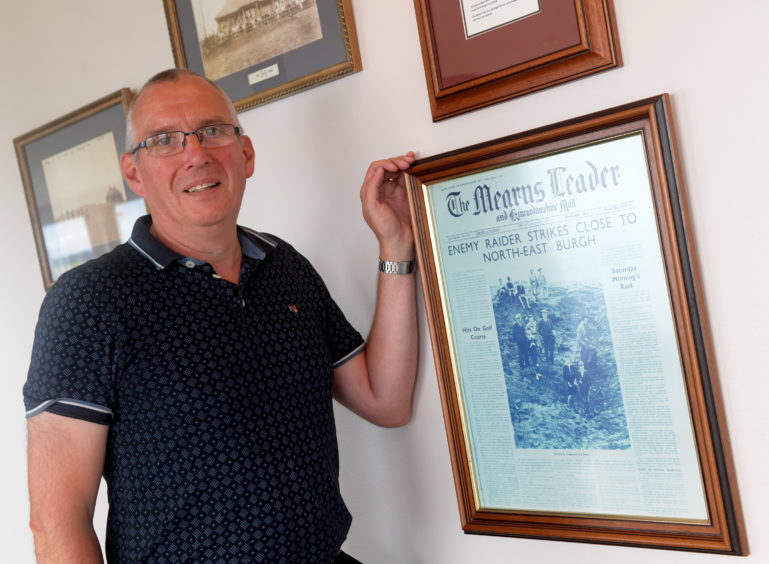
“Visitors are always pleasantly surprised when they hear about it. It’s just a nice story to tell.
“When they are walking off the course they are quite amused, however, it must have been scary on the night.”
Hitler’s Bunker is very much part of the course and golfers often find their ball landing in it.
“It looks like a filled in bunker and that’s very often how I describe it when pointing it out from the clubhouse,” said Mr Kerr. “It is cut back and they keep the grass to a level.
“It’s the same as rough, but you might have an awkward stance, but it’s not particularly a hazard.”
Having a World War Two crater between fairways is not the only quirky aspect to Stonehaven Golf Club.
It is also the only one to be built across two tectonic plates – the Highland Boundary Fault runs through the course and marks where the Lowlands of Scotland end and the Highlands begin.
“The Highland fault goes right across Scotland and finishes jutting out into the sea just off the course. So you are effectively going Lowland to Highlands and back again, across two tectonic plates and never notice them move,” said Mr Kerr, with a laugh.
Of course, the collision of the continent-shaping plates happened millions of years ago, with Stonehaven Golf Club a relatively recent addition.
It was founded on Friday April 13 1888. Originally it was a 10 hole course and its first club house was a rustic affair of wooden walls and thatched roof.
Its old chimney stack still stands by the 7th tee.
The club decided to expand and modernise and in July 1879, the new course and clubhouse was opened.
On August 18 1906 it played host to a legendary challenge match between Open champion James Braid and his nephew and twice Open runner-up Archie Simpson, the professional at Royal Aberdeen.
They played over 36 holes and finished all square. Afterwards, the gifted pair of course designers planned improvements to the course.
Stonehaven Golf Club was home to professional George Duncan, who won The Open in 1920, and played three times in the Ryder Cup team, captaining the winning team in 1929.
Other famous names to have taken to the golf club’s fairways include Ryder Cup icon Harry Bannerman and Sandy Pirie, a star of the Walker Cup and one of the best amateurs of the north-east if not the UK.
Football stars have also enjoyed the course, including late Celtic legend Billy McNeill and Rangers star Bobby Williamson.
Mr Kerr said: “A lot of the Aberdeen players in the days of Alex Ferguson played here. I think it was a way to escape from the wrath of Fergie – rumour has it, anyway.”
But while it has a rich history and has seen some famous names tee off, Stonehaven Golf Course has another outstanding feature, said Mr Kerr. It is set in beautiful surroundings.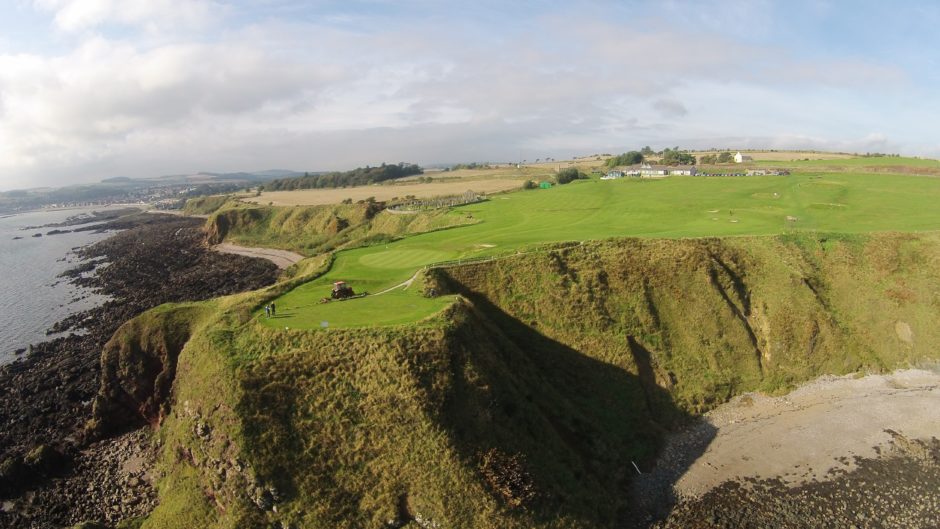
“It has just glorious scenery, with cliffs right along the full side of the course, the views out to the bay – it is a quite stunning location and with a few stories to tell as well,” he said.
